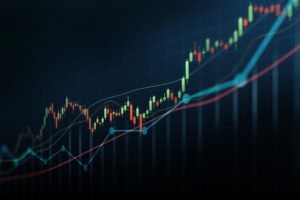What analysis tools do CFD traders use in Singapore?

It is no secret that trading in the financial markets is one of the most popular career paths for those looking to make a living. As more and more traders get involved in the business, it becomes increasingly important to understand what tools are available to help them analyse their positions and take advantage of opportunities as they arise.
This article will focus on the analysis tools CFD traders use in Singapore and how they can be used to make informed trading decisions.
What is CFD trading?
CFD (Contract For Difference) trading is an agreement between two parties to exchange the difference between the opening price and closing price of a contract. Without owning the underlying asset, it allows investors to speculate on various markets, such as stocks, commodities, indices, and foreign exchange. CFD trading Singapore uses various analysis tools to help them calculate their potential profits or losses, track market trends and develop strategies to increase their chances of success.
Fundamental analysis
Fundamental analysis is essential for understanding how a security or sector might perform over time. It involves analysing economic indicators, financial statements, and company news reports to understand how a particular asset might perform. CFD traders can use this information in Singapore to devise grounded strategies rather than speculation. By monitoring macroeconomic data, geopolitical events, interest rates, and other relevant factors, investors can determine the best entry points for their positions and when to exit.
Furthermore, CFD traders in Singapore may also use fundamental analysis to assess a company’s or sector’s health and make informed decisions about whether to invest. For example, investors can evaluate the financial strength of a business by looking at its balance sheet, cash flow statement, and other vital metrics. This allows them to accurately assess risks associated with investing in a particular asset or sector and make informed decisions about where to put their money.
Technical analysis
Technical analysis is a form of analysis that focuses on the price action of an asset over time rather than its fundamental value. It involves studying past trading patterns and using indicators such as moving averages, support and resistance levels, trendlines, and chart patterns to predict future price movements. By understanding how price has reacted in the past, traders can gain insight into what might happen next. Technical analysis tools are popular among CFD traders in Singapore as they provide a reliable way to spot opportunities and make more informed trade decisions.
Technical analysis also allows investors to identify potential entry and exit points and when to take profits or cut losses. By learning to recognize chart patterns and use indicators, traders can develop strategies that maximise their chances of success.
Risk management tools
Risk management is an essential aspect of trading that requires careful consideration by all investors, regardless of their experience or strategy. Risk management tools can help CFD traders in Singapore to identify and manage potential risks associated with their positions. Examples of risk management tools include:
- Stop-loss orders automatically close a position when it reaches a certain price level.
- Limit orders, which restrict the maximum loss that can be incurred.
- Trailing stops, which are used to lock in profits as the market moves against you.
In addition, CFD traders in Singapore may also make use of leverage to increase their buying power. Using margin, investors can open more prominent positions that would otherwise be out of reach. However, it is essential to note that leverage can magnify losses and gains and should be used responsibly.
To that end
CFD trading involves significant risk and is unsuitable for everyone, so investors must use analysis tools to make informed decisions about their positions. Fundamental analysis, technical analysis, and risk management tools are all essential for successful CFD trading in Singapore. By understanding how these different tools work, investors can increase their chances of success and make more profitable trades.
Ultimately, the key to successful CFD trading lies in finding the right combination of analysis tools that meet your trading goals and objectives. With proper planning and research, CFD traders in Singapore can maximise their profits while minimising risks.








